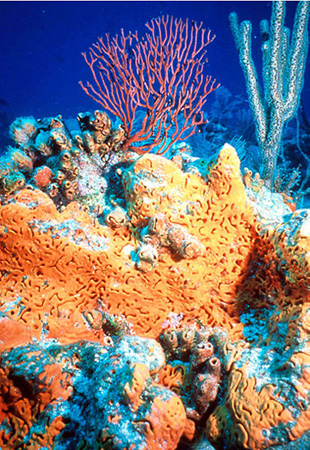The orange elephant ear sponge is one of the gaudiest denizens of the oceans. It looks like a bumpy traffic cone, with the same brilliant orange color. And like a traffic cone, it may someday offer us protection against an unseen danger.
 An orange Elephant Ear sponge at the Florida Keys National Maritime Sanctuary. Credit: National Oceanic and Atmospheric Administration
An orange Elephant Ear sponge at the Florida Keys National Maritime Sanctuary. Credit: National Oceanic and Atmospheric AdministrationThe orange elephant ear is found in the Caribbean Sea, the Gulf of Mexico, and other tropical waters around the world.
A species in the Coral Sea emits a chemical compound that seems to keep other sponges from settling too close by — the equivalent of marking its territory. The compound is produced by either the sponge itself, or by a type of bacteria that lives inside the sponge.
In the 1990s, researchers discovered that this compound can fight cancer by interfering with the way cancer cells divide. But there just aren’t enough sponges to produce enough of the compound to use it in cancer-fighting medicines. So scientists have been trying to find a way to reproduce the compounds in the laboratory.
In 2010, a team at MIT reported success. The team said it had developed a way to synthesize all six varieties of the compound quickly and inexpensively. The researchers plan to work with other scientists to begin testing the cancer-fighting properties of the compounds produced in the lab.
It’ll be many years before any drugs based on the orange elephant ear sponge could hit the market — and the research may not even produce a useful drug at all. Still, the work shows that we have a lot to gain from studying the creatures that inhabit the world’s oceans.

